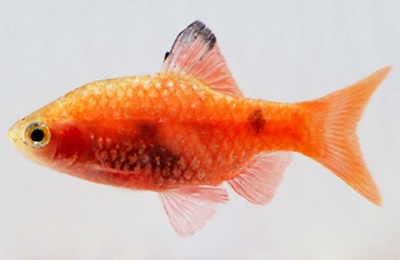
SKU: H730
Barbs & Active Community Tank
In Stock
Out of Stock
Temporarily Out of Stock
Discontinued
Special Order
Price:
Product Details
Active Community Tank with Tiger Barbs and other Barbs
Tank Size: 20+ Gallon
Why Keep Them? Barbs are a group of freshwater fish that are members of the Cyprinidae family from Asia. Many barbs make great community tank members because they are colorful, active and very hardy.
Tank Conditions: This community tank is suitable for tanks 20 gallon or more. Larger tanks can create an even better display. Barbs do best when they are kept in large groups, at least 5+ fish of the same species. Especially for Tiger Barbs, keeping them in a larger group leads to more natural behaviors, and prevents aggression. Filtration can include a properly sized power filter with a supplemental air pump. Aquarium salt is optional, but 1 tablespoon of salt per 5 gallons works well.
Temperature: 72-80F pH: 6.8-7.6
Barbs are tolerant to a wide range of Temperatures and pHs due to the changing chemistry where they are found in the wild. Indonesia, Borneo.
Live Plants? You can use live or plastic plants. If choosing to do live plants, consider picking a plant specific substrate like Fluval Stratum, Seachem0s Flourite Varieties, or Carib Sea0s Eco Complete Substrates. Leave open space in the front for swimming and add some tall plants or driftwood towards the back. Barbs will enjoy darting between the plants while they swim together.
Feeding: They will accept a wide variety of foods. Feed two to three times a day with flake food, small pellets, mysis shrimp, plankton, or bloodworms. A regular Tropical Flake recipe would be suitable for a barb community. If adding cichlids to your community, consider feeding Ocean Nutrition0s Cichlid Omni Flakes or Cichlid Vegi Flakes.
How Many? Barbs should be kept in groups, five or more is best. When in groups they will harmlessly chase each other and usually leave other fish alone. You can keep several species together, but always buy them in groups.
Barbs are a great option for a hardy and an active fish. But, due to their semi aggressive nature, you need to be sure when picking tank mates that they are compatible. Generally, you want to select fish that will be slightly larger, and that are quick and have compact fins, as barbs are known to be fin nippers. Below is a list of some of the best fish to mix with Barbs. Come in to our store today and speak with a sales associate, we would be happy to help you build the perfect community for your tank!
Barbs: Rosy, Black Ruby, Clown, Gold, Odessa, Rhomba, Tiger.
Cichlids: Keyhole and Kribensis.
Danios: Giant Danio, Pearl Danio, and Zebra Danio.
Gouramis: Blue, Kissing, Gold, Moonlight, Pearl, Platinum, and Sunset Thicklip.
Loach, Botia: Clown Loach, Kuhli Loach, Weather Loach, and most Botias.
Livebearers: Moons and Swordtails.
Rainbowfish: Most Rainbowfish of similar size are compatible - buy in groups, the tank should be 30 gal or more.
Rasbora: Brilliant and Scissortail. Make sure to buy in groups.
Sharks: Small Red Tail Shark, small Red Rainbow Shark, small Tri Color Shark, and Roseline Shark.
Tetras: Choose larger, more active tetras. Some of these include Large Black Tetra, large Bleeding Heart Tetra, Congo Tetra, large Serpae Tetra,
Other Fish: Algae Eaters, Chilodus Headstander, Prochilodus, Flying Fox, Siamese
Algae Eater, and Panda Garra.
Silver Dollars: If your tank is 20 gal or more, they will eat live plants.
Eels: Fire, Spiney, Tire Track.
Catfish: A wide variety of catfish will work including Corydoras, Small Plecostomus, Synodontis and many others.
Tinfoil Barbs, Mascara Barbs, and Tinfoil Barbs: Only if your tank is 40 gal or more, due to their large maximum size.
Tank Size: 20+ Gallon
Why Keep Them? Barbs are a group of freshwater fish that are members of the Cyprinidae family from Asia. Many barbs make great community tank members because they are colorful, active and very hardy.
Tank Conditions: This community tank is suitable for tanks 20 gallon or more. Larger tanks can create an even better display. Barbs do best when they are kept in large groups, at least 5+ fish of the same species. Especially for Tiger Barbs, keeping them in a larger group leads to more natural behaviors, and prevents aggression. Filtration can include a properly sized power filter with a supplemental air pump. Aquarium salt is optional, but 1 tablespoon of salt per 5 gallons works well.
Temperature: 72-80F pH: 6.8-7.6
Barbs are tolerant to a wide range of Temperatures and pHs due to the changing chemistry where they are found in the wild. Indonesia, Borneo.
Live Plants? You can use live or plastic plants. If choosing to do live plants, consider picking a plant specific substrate like Fluval Stratum, Seachem0s Flourite Varieties, or Carib Sea0s Eco Complete Substrates. Leave open space in the front for swimming and add some tall plants or driftwood towards the back. Barbs will enjoy darting between the plants while they swim together.
Feeding: They will accept a wide variety of foods. Feed two to three times a day with flake food, small pellets, mysis shrimp, plankton, or bloodworms. A regular Tropical Flake recipe would be suitable for a barb community. If adding cichlids to your community, consider feeding Ocean Nutrition0s Cichlid Omni Flakes or Cichlid Vegi Flakes.
How Many? Barbs should be kept in groups, five or more is best. When in groups they will harmlessly chase each other and usually leave other fish alone. You can keep several species together, but always buy them in groups.
Barbs are a great option for a hardy and an active fish. But, due to their semi aggressive nature, you need to be sure when picking tank mates that they are compatible. Generally, you want to select fish that will be slightly larger, and that are quick and have compact fins, as barbs are known to be fin nippers. Below is a list of some of the best fish to mix with Barbs. Come in to our store today and speak with a sales associate, we would be happy to help you build the perfect community for your tank!
Barbs: Rosy, Black Ruby, Clown, Gold, Odessa, Rhomba, Tiger.
Cichlids: Keyhole and Kribensis.
Danios: Giant Danio, Pearl Danio, and Zebra Danio.
Gouramis: Blue, Kissing, Gold, Moonlight, Pearl, Platinum, and Sunset Thicklip.
Loach, Botia: Clown Loach, Kuhli Loach, Weather Loach, and most Botias.
Livebearers: Moons and Swordtails.
Rainbowfish: Most Rainbowfish of similar size are compatible - buy in groups, the tank should be 30 gal or more.
Rasbora: Brilliant and Scissortail. Make sure to buy in groups.
Sharks: Small Red Tail Shark, small Red Rainbow Shark, small Tri Color Shark, and Roseline Shark.
Tetras: Choose larger, more active tetras. Some of these include Large Black Tetra, large Bleeding Heart Tetra, Congo Tetra, large Serpae Tetra,
Other Fish: Algae Eaters, Chilodus Headstander, Prochilodus, Flying Fox, Siamese
Algae Eater, and Panda Garra.
Silver Dollars: If your tank is 20 gal or more, they will eat live plants.
Eels: Fire, Spiney, Tire Track.
Catfish: A wide variety of catfish will work including Corydoras, Small Plecostomus, Synodontis and many others.
Tinfoil Barbs, Mascara Barbs, and Tinfoil Barbs: Only if your tank is 40 gal or more, due to their large maximum size.
| Product PDF: | |
|---|---|
| Extra Details: |
Related Items:
| Item | Description | Quantity | Price | ||
| 149 |  |
Tiger Barb | in stock | $3.99 | |
| 1661 |  |
Large Tiger Barb | in stock | $6.99 | |
| 141 |  |
Green Tiger Barb | in stock | $5.99 | |
| 5869 |  |
Electric Green Glo Barb | in stock | $13.99 | |
| 135 |  |
Black Ruby Barb | in stock | $3.99 | |
| 133 | 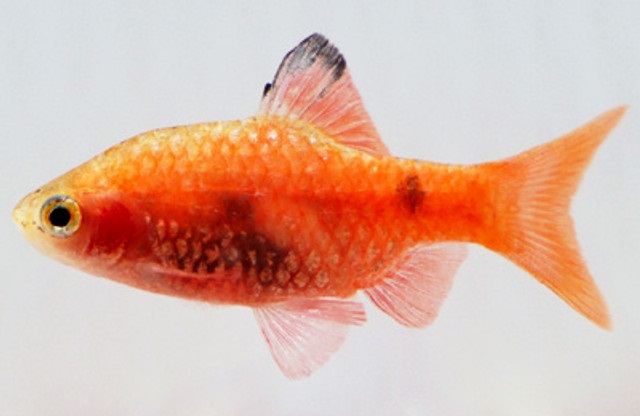 |
Red Glass Rosy Barb | in stock | $4.99 | |
| 150 | 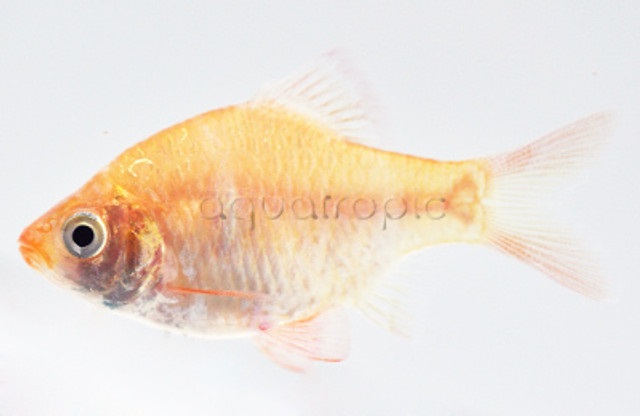 |
Albino Tiger Barb | in stock | $3.99 | |
| 1620 | 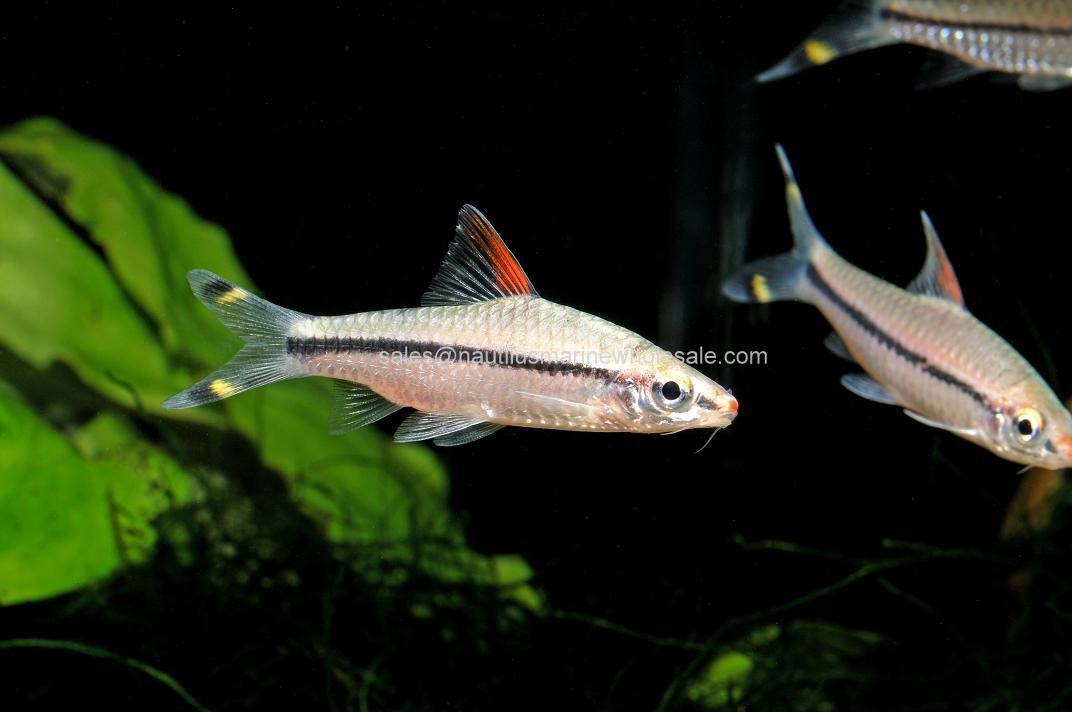 |
Roseline Shark | in stock | $19.99 | |
| 1629 |  |
Platinum Green Tiger Barb | in stock | $12.99 | |
| 143 | Odessa Barb | in stock | $4.99 | ||
| 151 |  |
Tinfoil Barb | in stock | $8.99 | |
| 152 |  |
Gold Tinfoil Barb | in stock | $12.99 | |
| 4611 |  |
Red Panda Barb | in stock | $14.99 | |
| 400 |  |
Keyhole Cichlid | out of stock | $13.99 | |
| 401 |  |
Kribensis Cichlid | out of stock | $9.99 | |
| 340 |  |
Striped Convict Cichlid | in stock | $3.99 | |
| 663 |  |
Pearl Gouramis | in stock | $6.99 | |
| 657 |  |
Gold Gouramis | out of stock | $8.99 | |
| 651 |  |
Blue Gouramis | out of stock | $9.99 | |
| 656 | 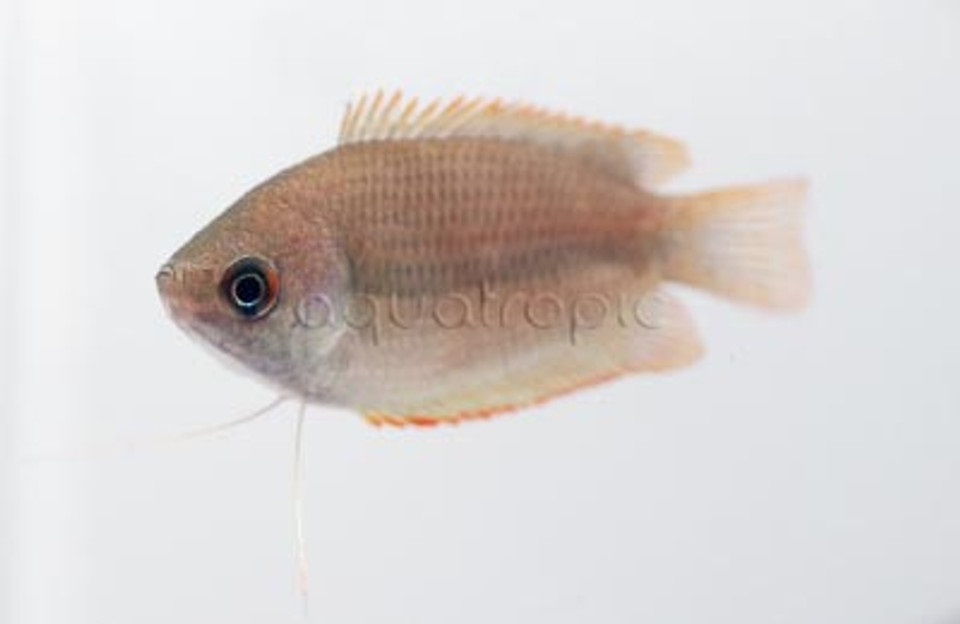 |
Red Honey Gouramis | in stock | $11.99 | |
| 180 |  |
Yo Yo Botia (Pakistani Loach) | in stock | $9.99 | |
| 735 |  |
Dojo Weather Loach | out of stock | $9.99 | |
| 732 |  |
Gold Dojo Weather Loach | in stock | $20.99 | |
| 729 |  |
Clown Loach - Sm | out of stock | $13.99 | |
| 2396 |  |
Panda Garra | in stock | $13.99 |

